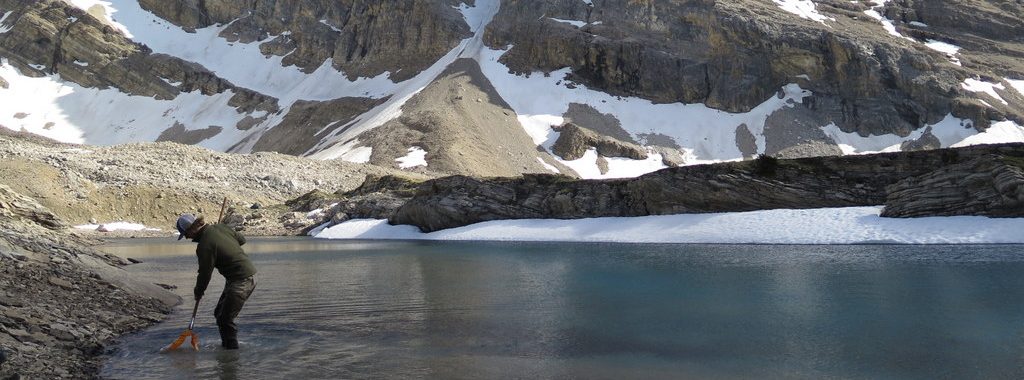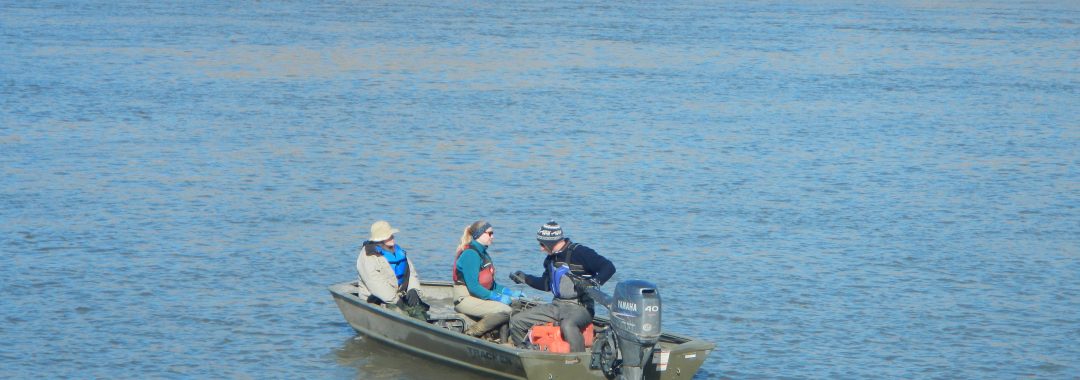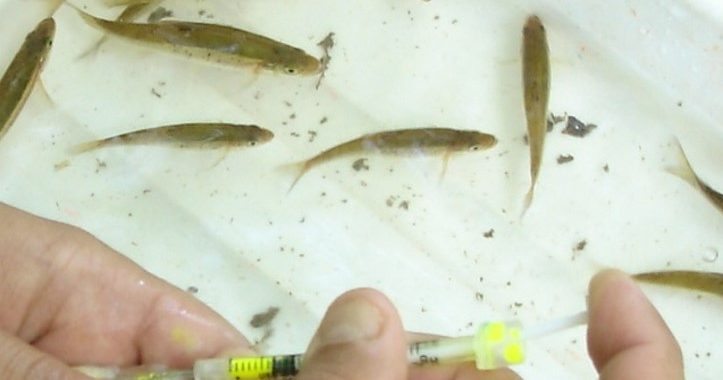Link to article: 2013_06_29_Sun Media_Anglers asked to help in research
Author Archive: Poesch, Mark
Research in the Fisheries and Aquatic Conservation Lab highlighted in Renew Magazine
PoeschLab research on the impacts of floods on freshwater fishes was highlighted in the Fall 2013 issue of Renew Magazine.
Link to pdf: Renew_Fall 2013
Boyce, M. and Poesch, M.S. 2013. Research needs for fisheries and wildlife in Alberta. 35pp., Alberta Conservation Association, Edmonton, AB.
Citation: Boyce, M. and Poesch, M.S. 2013. Research needs for fisheries and wildlife in Alberta. 35pp., Alberta Conservation Association, Edmonton, AB.
Summary
Fisheries and wildlife management in North America is based on an extensive background of basic and applied research (Geist and McTaggart-Cowan 1995, Organ et al. 2010). Alberta has some of the finest hunting and fishing opportunities in the world with sustainably harvested populations of a diversity of fishes, birds, and mammals. However, because of aggressive industrial development, especially by the energy sector, future opportunities for hunting and fishing might be jeopardized unless habitats are managed carefully to ensure viable populations of fish and wildlife (Naugle 2011). Our objective is to identify research that is required to ensure that resource managers have the information required to make sound management decisions in the future. To obtain this list of research topics we have surveyed fisheries and wildlife biologists and managers from the Alberta Department of Environment and Sustainable Resource Development (ESRD), and the Alberta Conservation Association (ACA). We held meetings with ESRD and ACA staff in Sherwood Park, Lethbridge, and Edmonton, Alberta and also received suggestions from others throughout the province by e-mail. Subsequently we conducted literature reviews to provide background information on the published research already conducted on each topic, and we summarize briefly what we believe to be feasible and timely research.
This report is an update of the original research-needs document prepared by Boyce (2000) that was updated for wildlife research in 2005 (Boyce 2005). We have used the Simple Multi-attribute Rating Techniques (SMART) process again to rank research projects according to a process developed by Ralls and Starfield (1995), which is detailed in the Appendix. These ranks identify the most-important research according to criteria identified by ACA and ESRD fish and wildlife biologists and managers. Academic ecologists likely would identify a different list of priorities (Cristescu and Boyce 2013), and input from practicing field biologists and managers will help to ensure that research can influence policy (Neff 2011). Projects in the top third are marked ***, middle third **, and lowest-ranked projects *
Alberta Conservation Association funds research on Western Silvery Minnow
The PoeschLab is thankful to the Alberta Conservation Association (ACA) for helping fund research on the Western Silvery Minnow, a species at risk. This project is being conducted by MSc student Kenton Neufeld. We thank the ACA for their support.
Poesch, M.S. and D.A. Jackson (2012) Addressing the removal of rare species in multivariate bioassessments: the impact of methodological choices. Ecological Indicators 18: 82-90.
Abstract:
Multivariate analyses are important tools for the biological assessment of ecological communities. Despite the popularity of multivariate analyses in bioassessments, there is considerable controversy over how to treat rare species. As this debate remains unresolved, the objective of this study was to develop a methodology to quantify the impacts of removing rare species relative to other decisions inherent in multivariate analyses and to provide insight into their relative influence in our studies. Using fish species from a well-sampled system, we assessed the impact of several choices common to multivariate analyses, including the removal of rare species, ordination technique and measures of multivariate resemblance. Comparisons of multivariate analyses demonstrated the choice of ordination method explained 26% of the variation among the various results, followed by the choices regarding the removal of rare species (24.8%) and resemblance measure (11%). At the same time, the removal of rare species had important site-level impacts relative to full dataset, including a >9 fold change in sites impacted by the removal of single species, with an emphasis on removing species more correlated to anthropogenic stress. Our study demonstrates that the removal of rare species had similar or greater influence in multivariate analyses as other choices inherent in their calculation, such as the choice of ordination method. Better justifications for the removal of rare species, along with all decisions in multivariate analyses, are needed to move bioassessments forward.
Citation: Poesch, M.S. & Jackson, D.A. 2012. Addressing the removal of rare species in multivariate bioassessments: the impact of methodological choices. Ecological Indicators 18: 82-90.
Also Read:
Poesch, M.S. and D.A. Jackson (2012) Impact of species-specific dispersal and regional stochasticity on estimates of population viability in stream metapopulations. Landscape Ecology 27: 405-416.
Abstract:
Species dispersal is a central component of metapopulation models. Spatially realistic metapopulation models, such as stochastic patch-occupancy models (SPOMs), quantify species dispersal using estimates of colonization potential based on inter-patch distance (distance decay model). In this study we compare the parameterization of SPOMs with dispersal and patch dynamics quantified directly from empirical data. For this purpose we monitored two metapopulations of an endangered minnow, redside dace (Clinostomus elongatus), using mark-recapture techniques across 43 patches, re-sampled across a 1 year period. More than 2,000 fish were marked with visible implant elastomer tags coded for patch location and dispersal and patch dynamics were monitored. We found that species-specific dispersal and distance decay models provided qualitatively similar rankings of viable patches; however, there were differences of several orders of magnitude in the estimated intrinsic mean times to extinction, from 24 and 148 years to 362 and >100,000 years, depending on the population. We also found that the rate of regional stochasicity had a dramatic impact for the estimate of species viability, and in one case altered the trajectory of our metapopulation from viable to non-viable. The divergent estimates in time to extinction times were likely due to a combination species-specific behavior, the dendritic nature of stream metapopulations, and the rate of regional stochasticity. We demonstrate the importance of developing comparative analyses using species- and patch-specific data when determining quantitative estimates for mean time to extinction, which in the case of redside dace, were highly sensitive to different estimates of dispersal.
Citation: Poesch, M.S. & Jackson, D.A. 2012. Impact of species-specific dispersal and regional stochasticity on estimates of population viability in stream metapopulations. Landscape Ecology 27: 405-416.
Also Read:










